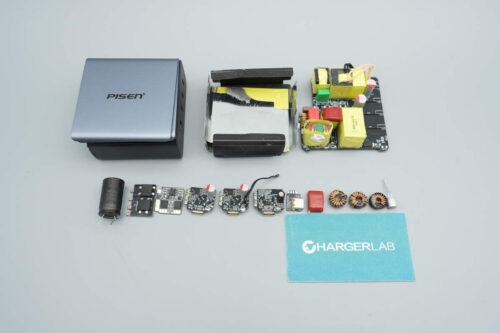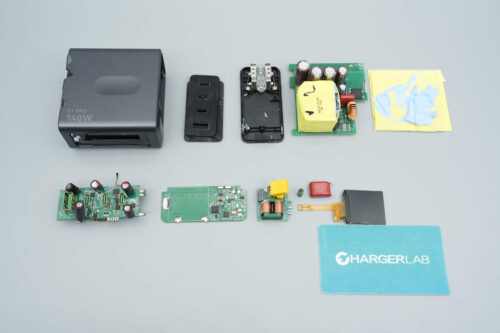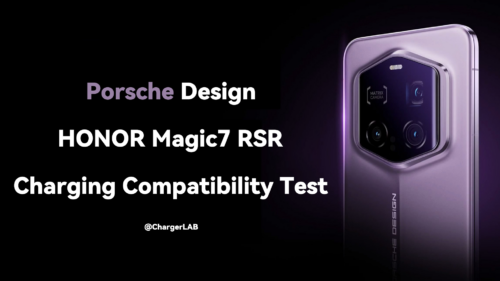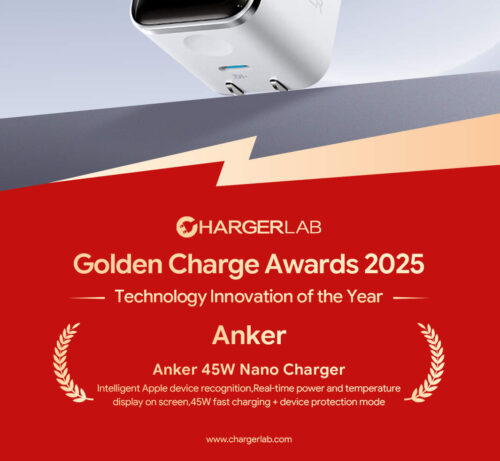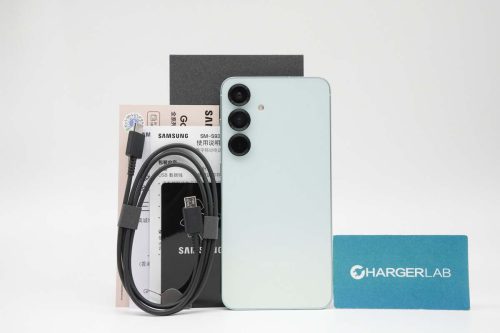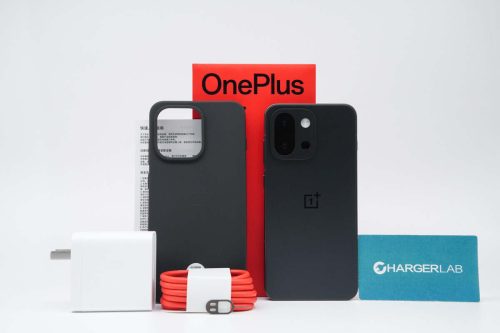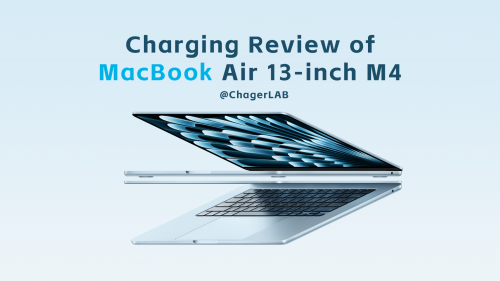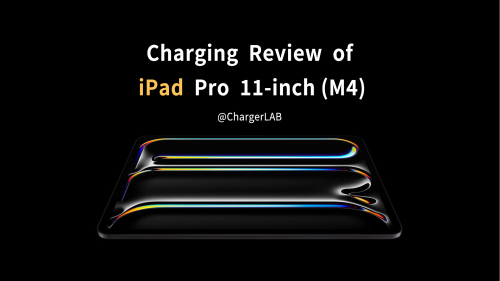Introduction
The all-new iPhone 15 is superior to its predecessor in many aspects, such as screen specs, the main camera, SoC (System on a Chip), and more. However, did you know that it falls behind the iPhone 14 in one particular aspect, which is related to its charging capabilities? Curious to find out what we discovered? Let's take a closer look.
Product Appearance
This section may be a bit mundane, so we'll highlight the key points.
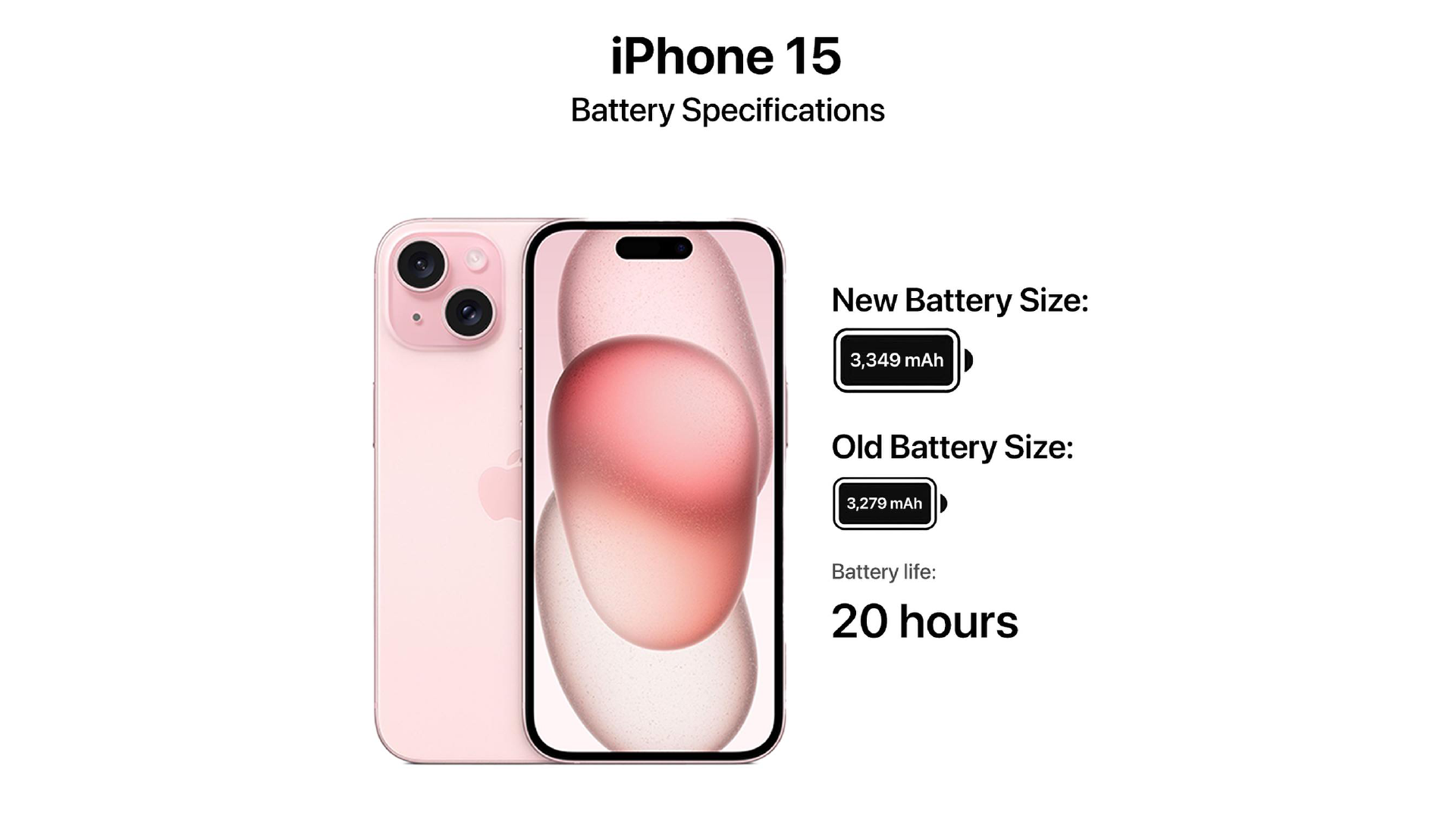
First of all, the battery capacity for the iPhone 15 is 3349mAh.
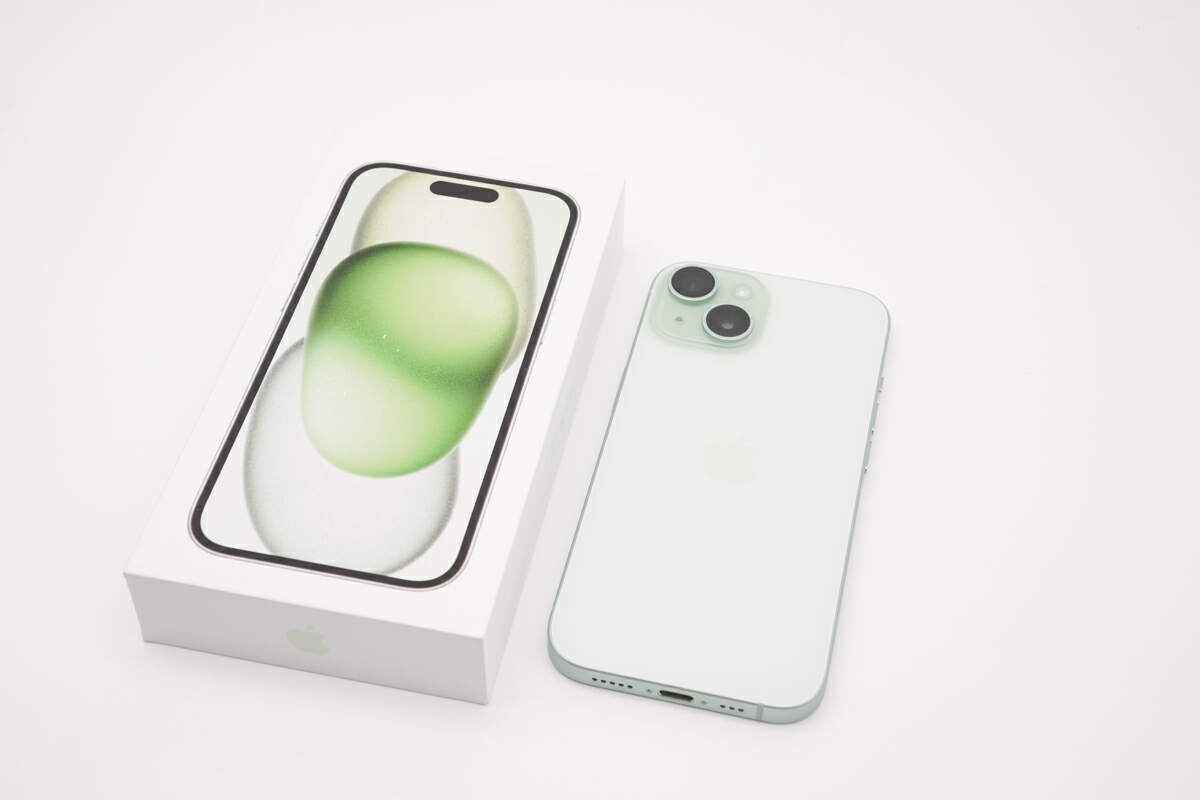
The packaging box follows the classic design of iPhones.
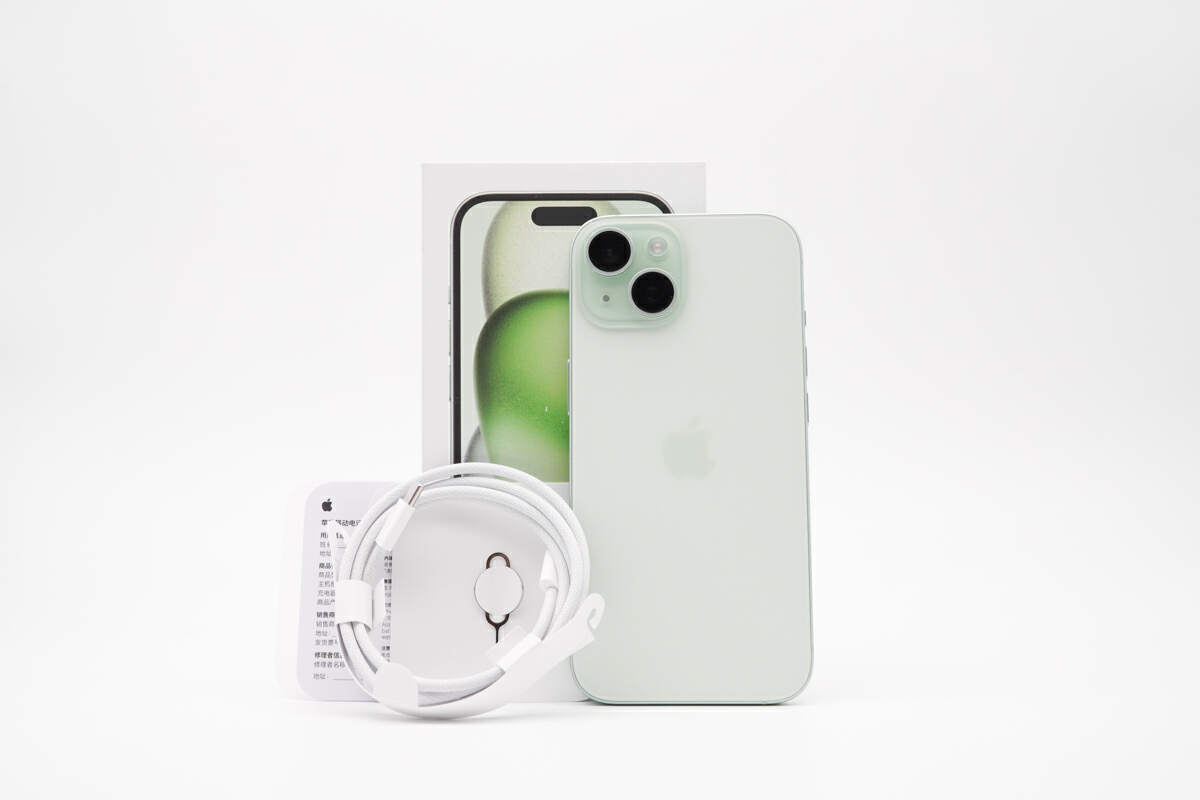
What we got is the green version with a storage capacity of 128GB.
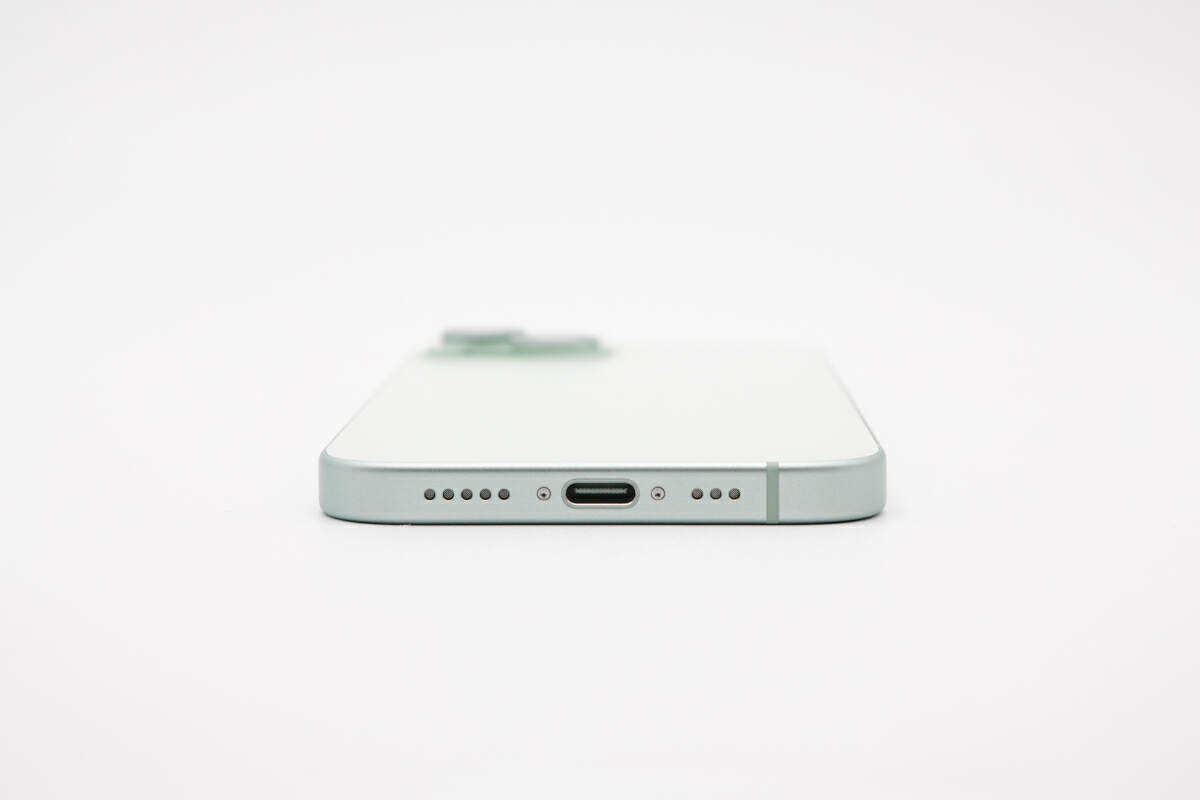
The base model only got a USB2.0 port, such a shame.
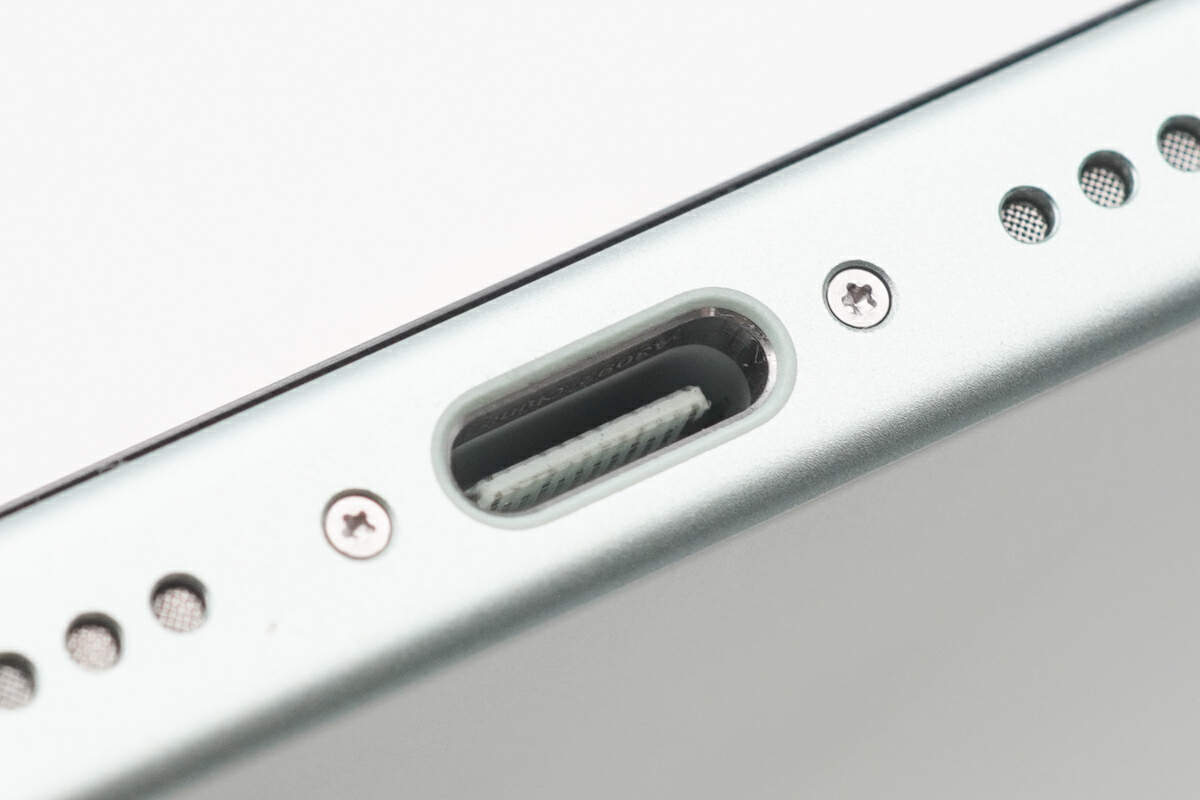
It has a serial number engraved on the inside.
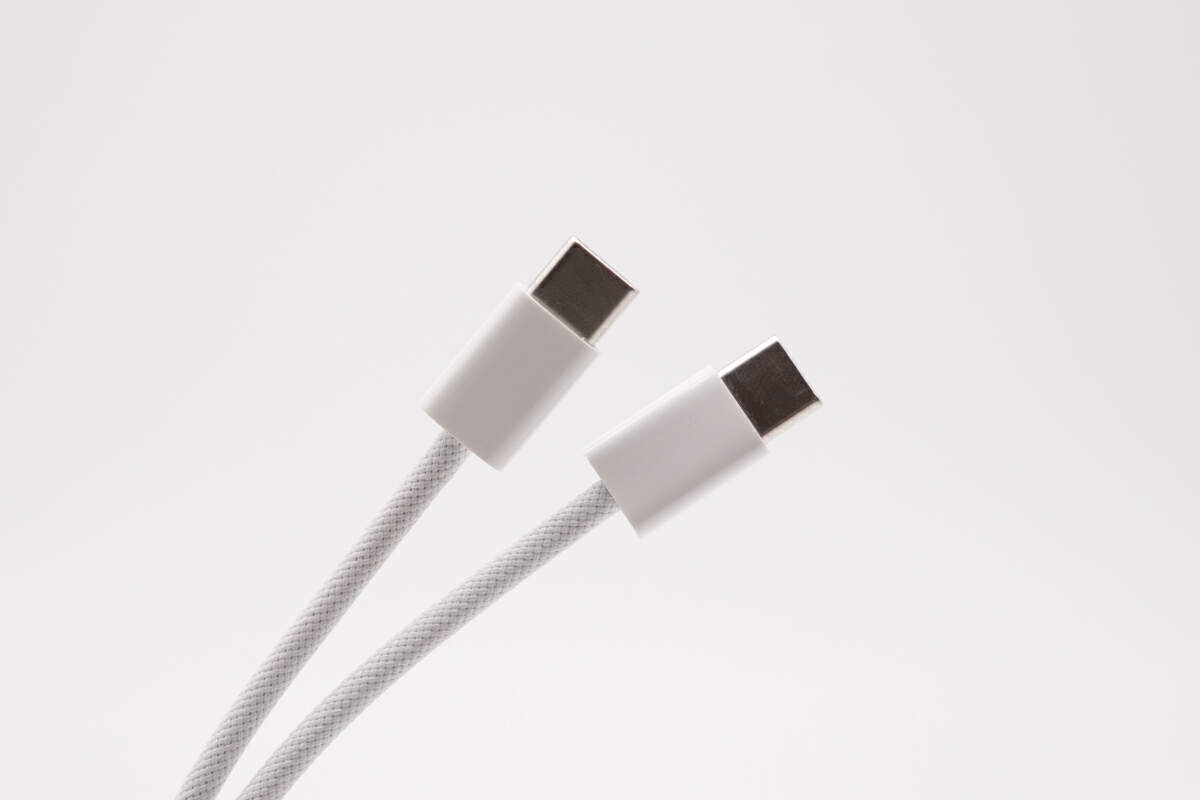
This is the included USB-C cable, just like the one we found on iPhone 15 Pro.
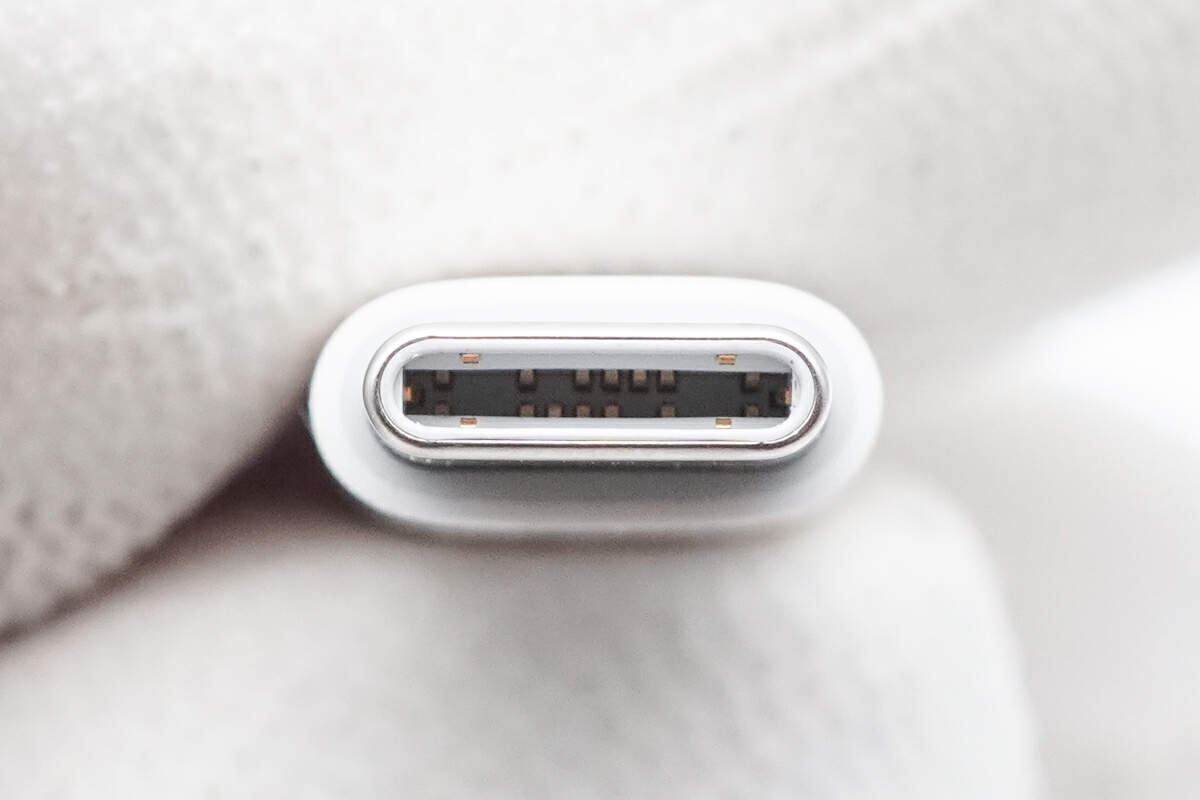
And the connector adopts a special pin design.
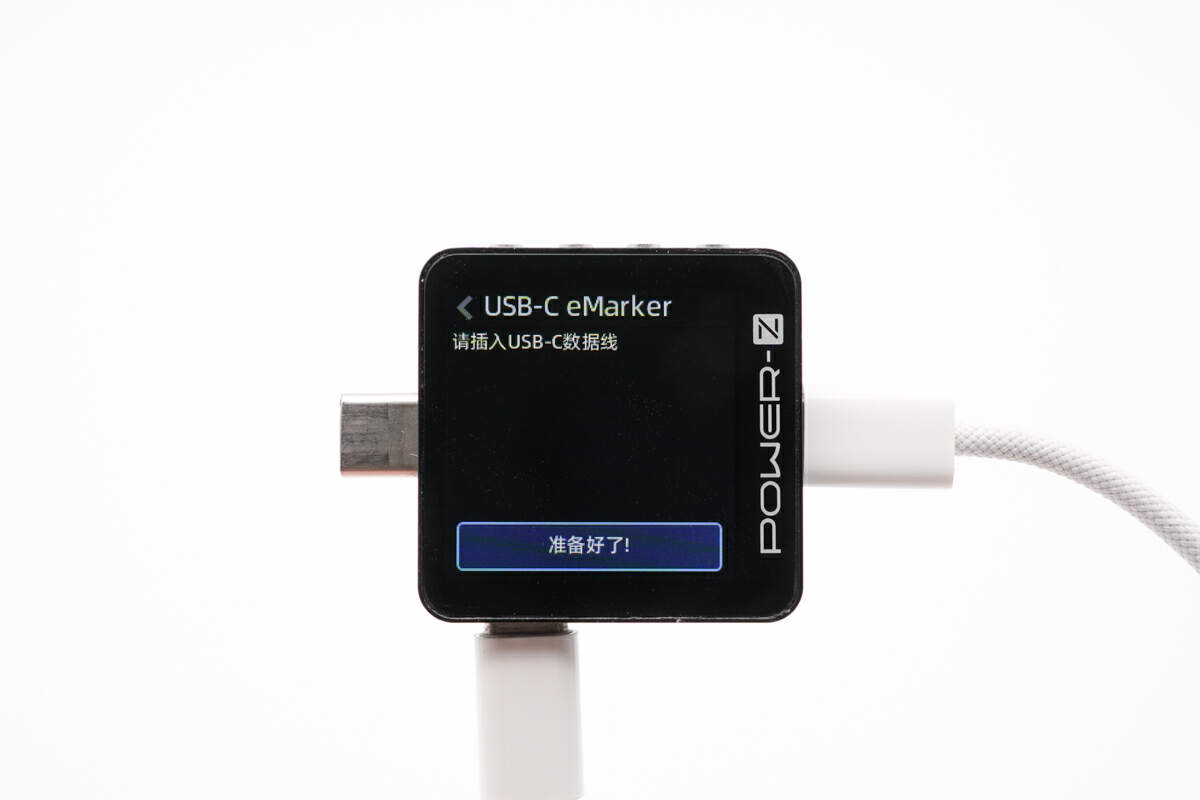
ChargerLAB POWER-Z KM003C shows it doesn't have an E-marker chip, same as iPhone 15 Pro.
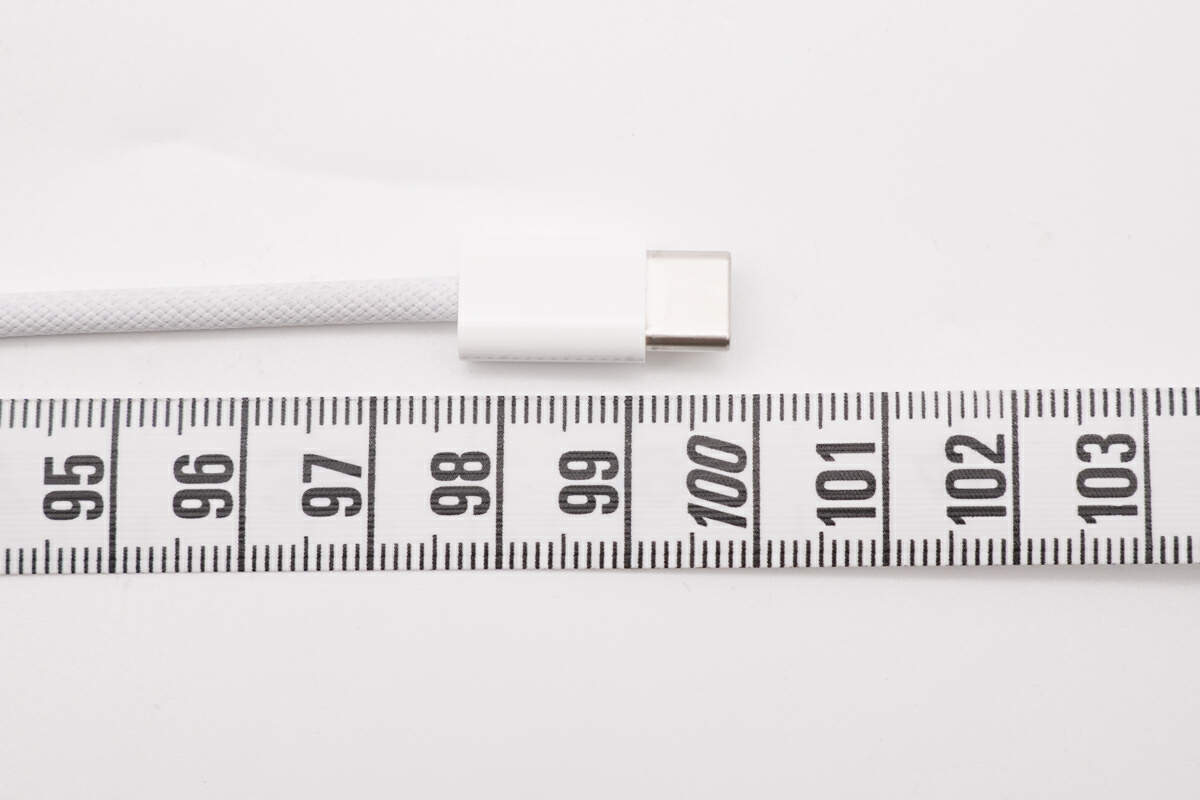
The length of this cable is 1m (3' 3.37'').
Charging Compatibility Test
Next, let's get to the test, starting with the compatibility part. Firstly, let's take a look at Apple's own chargers.
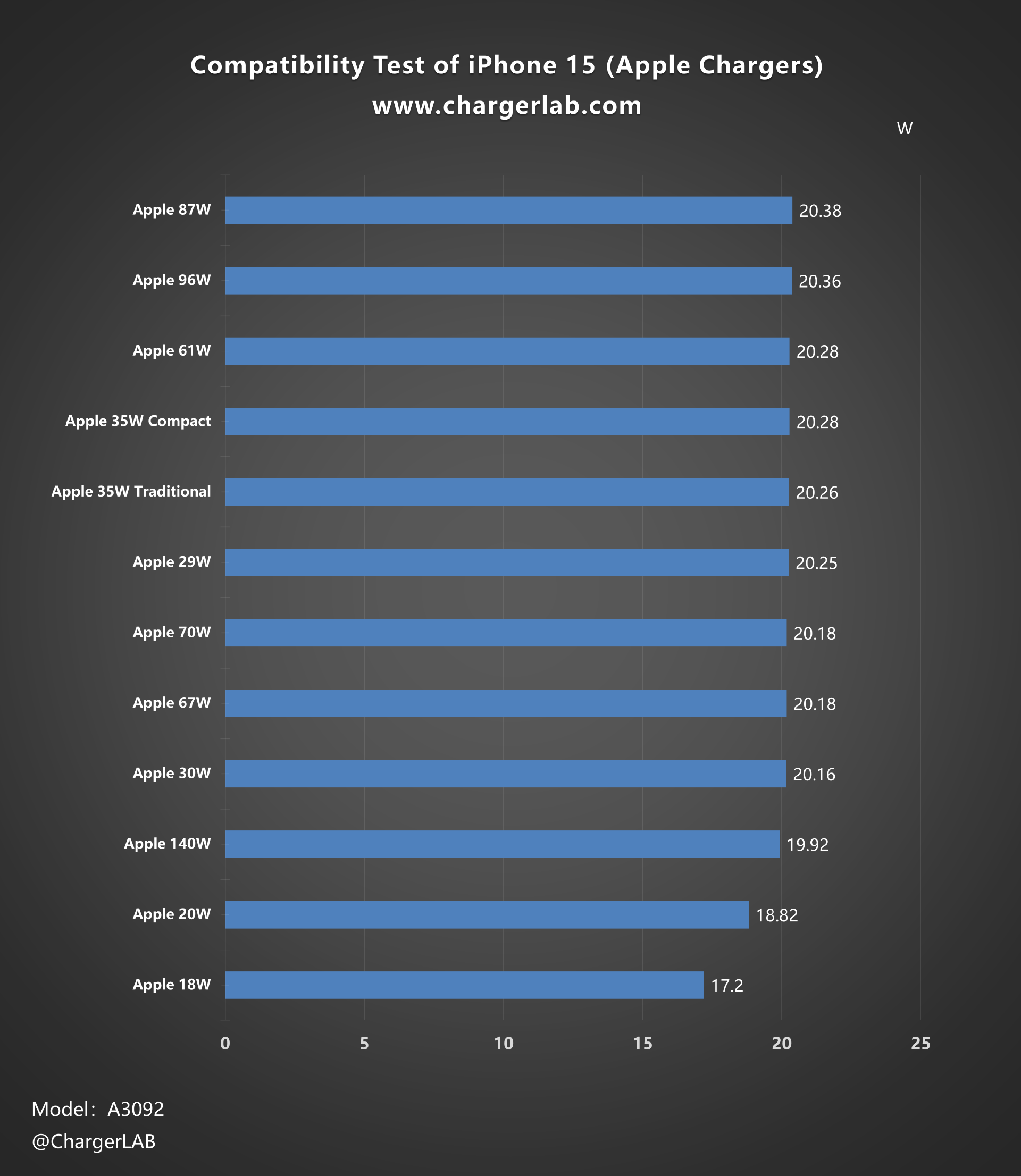
We tested all the Apple fast chargers we have. Plotting the data into a bar graph, we can see that the iPhone 15's maximum charging power is around 20W. That's a huge step back from the previous generation's 25W.
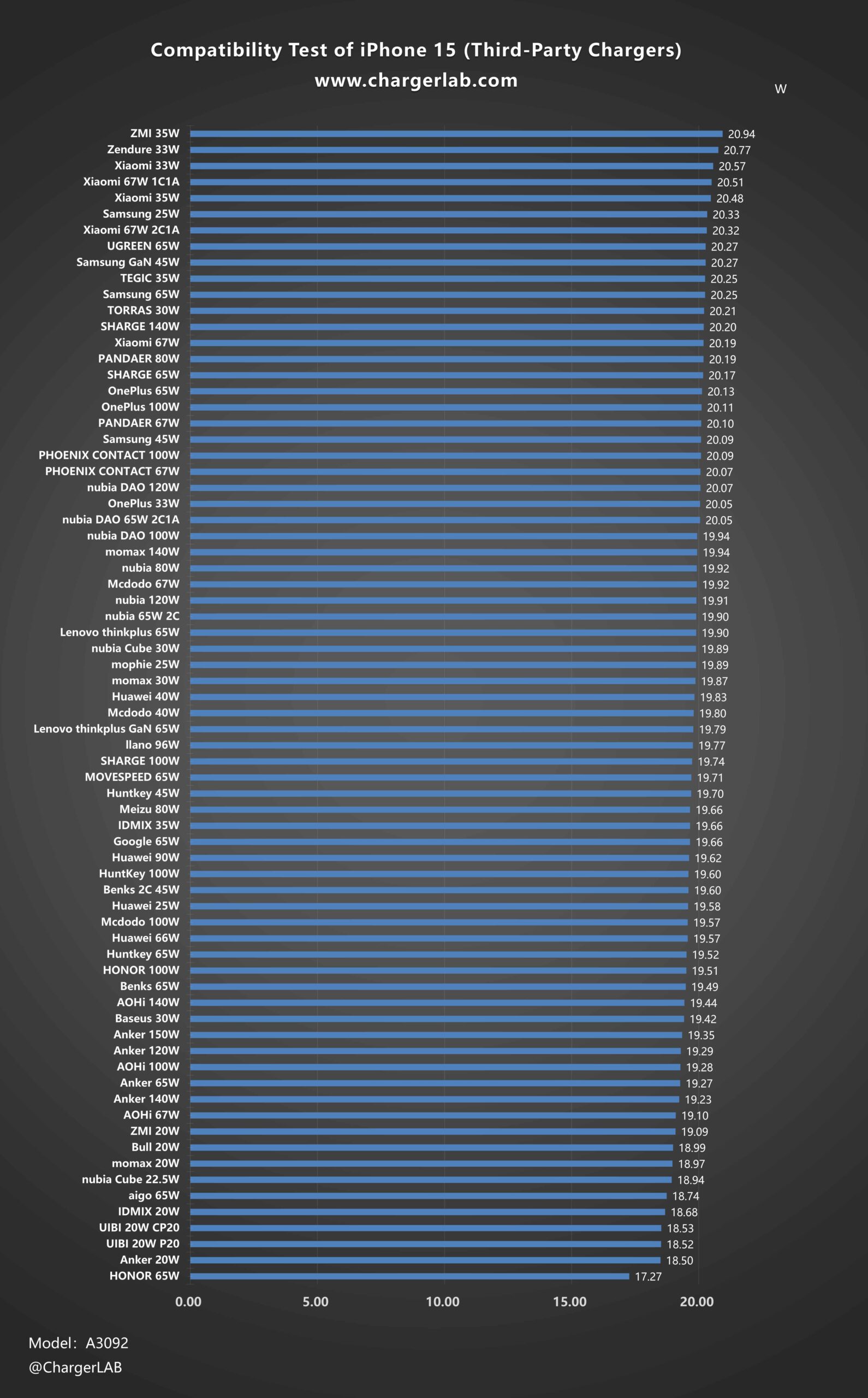
Regarding third-party chargers, a few models can surpass 20W, but they typically offer similar performance to Apple's chargers.
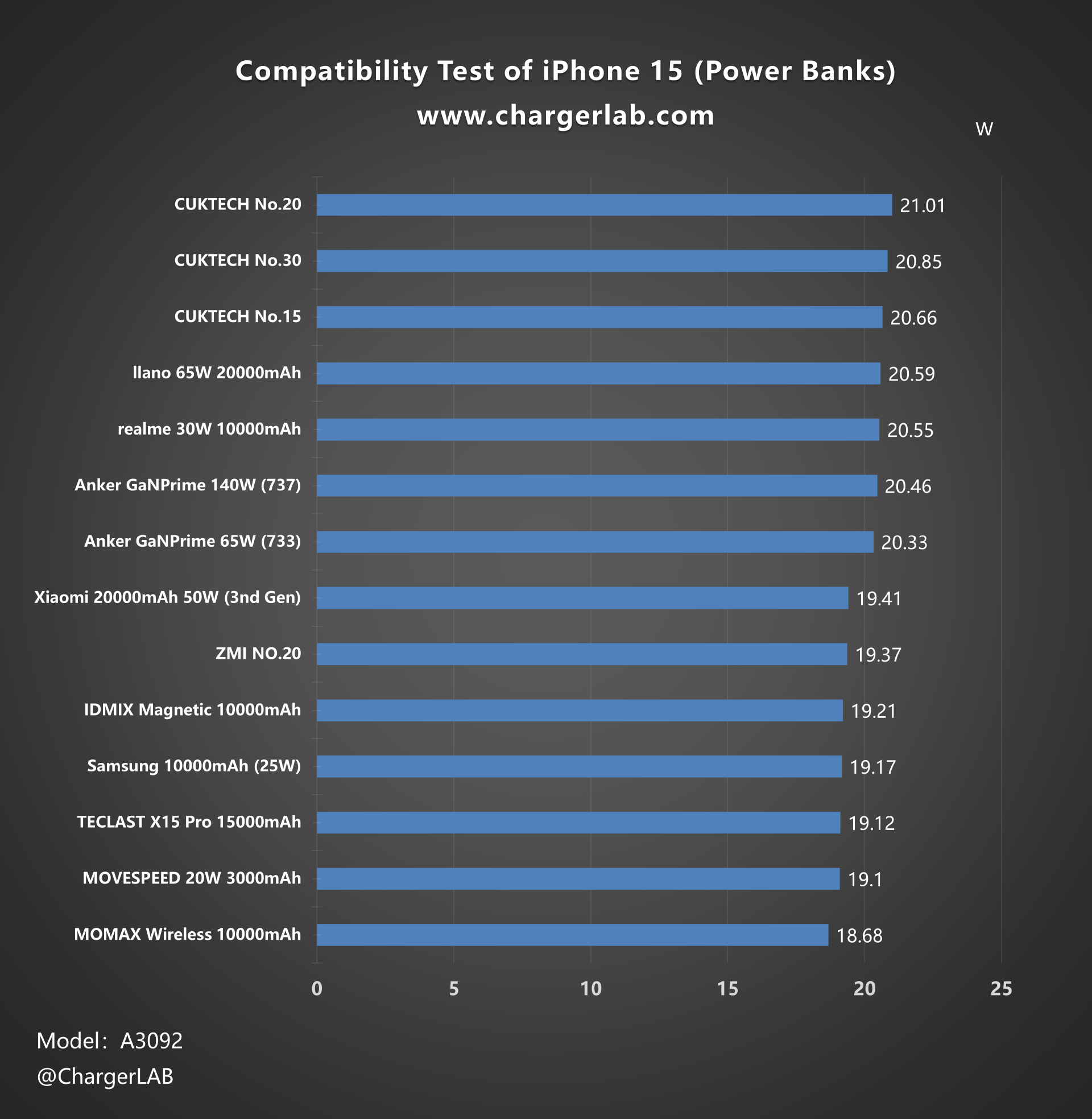
Power banks are also around 20W.
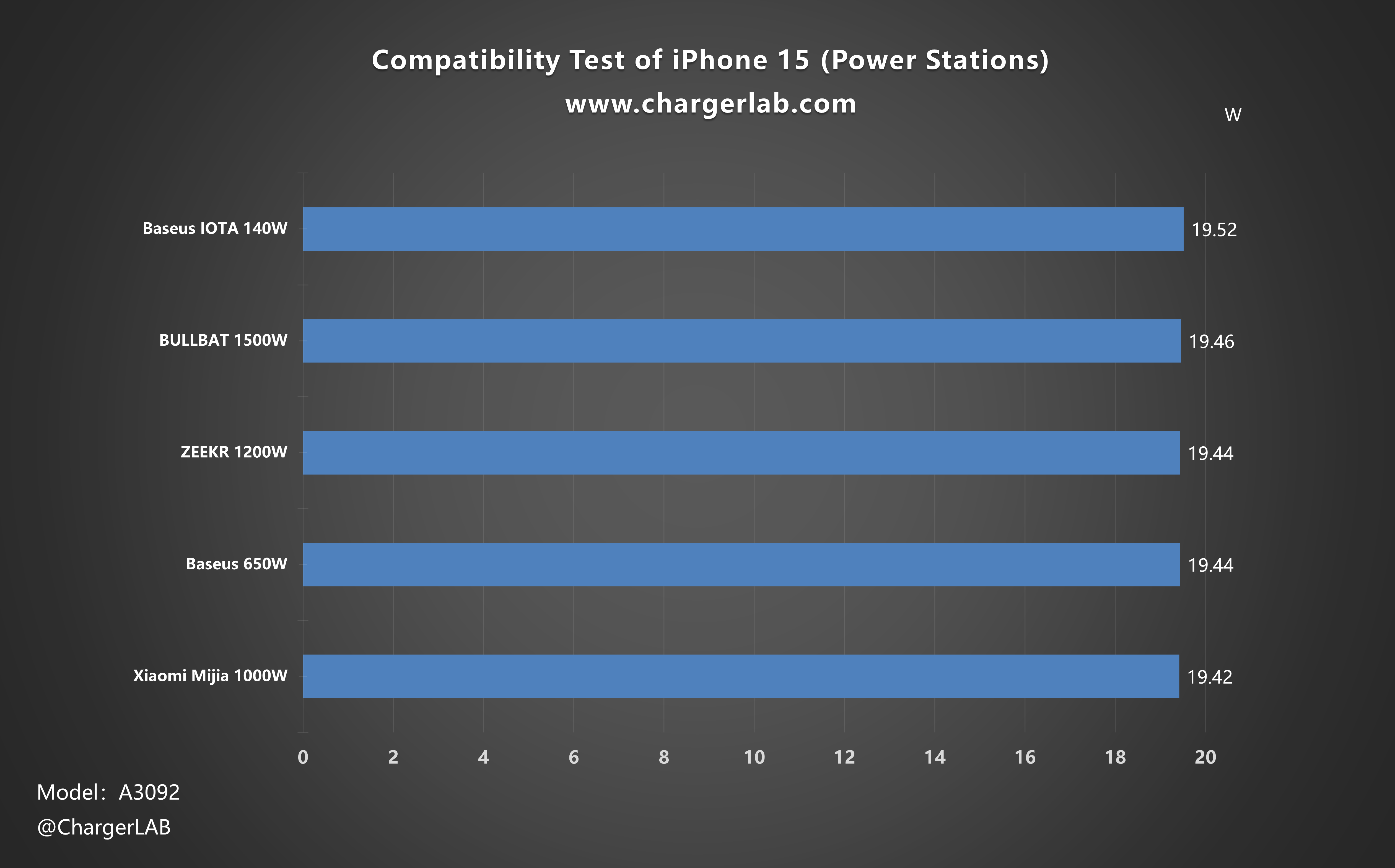
So does the portable power stations. Overall, they are all at the 20W level, and there are no issues with compatibility. Just like 15 Pro.
Wireless Charging Test
Although the iPhone 15 supports the latest Qi2 wireless charging standard, there are currently no wireless chargers available that do support Qi2. Thus, for this test, we used the MagSafe charger and standard Qi chargers.
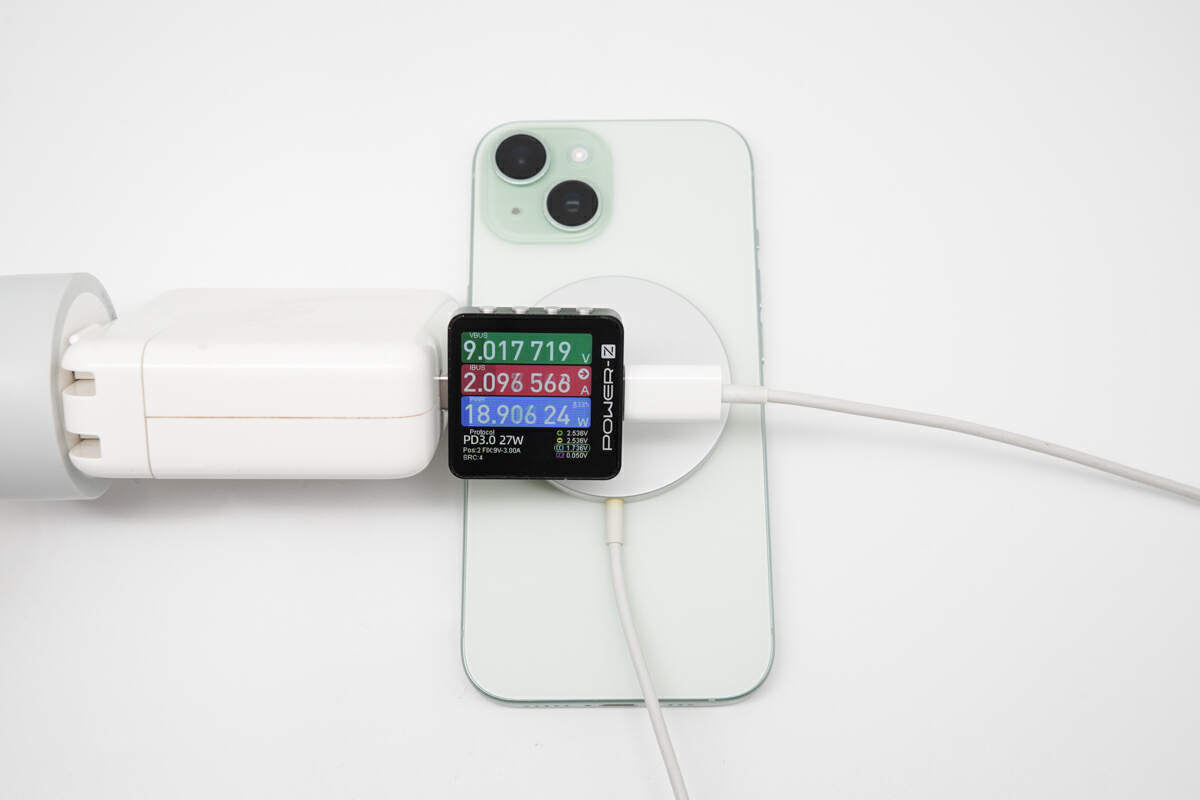
When charging the iPhone 15 Pro with the Apple MagSafe Charger, the power at the phone end is about 15W.
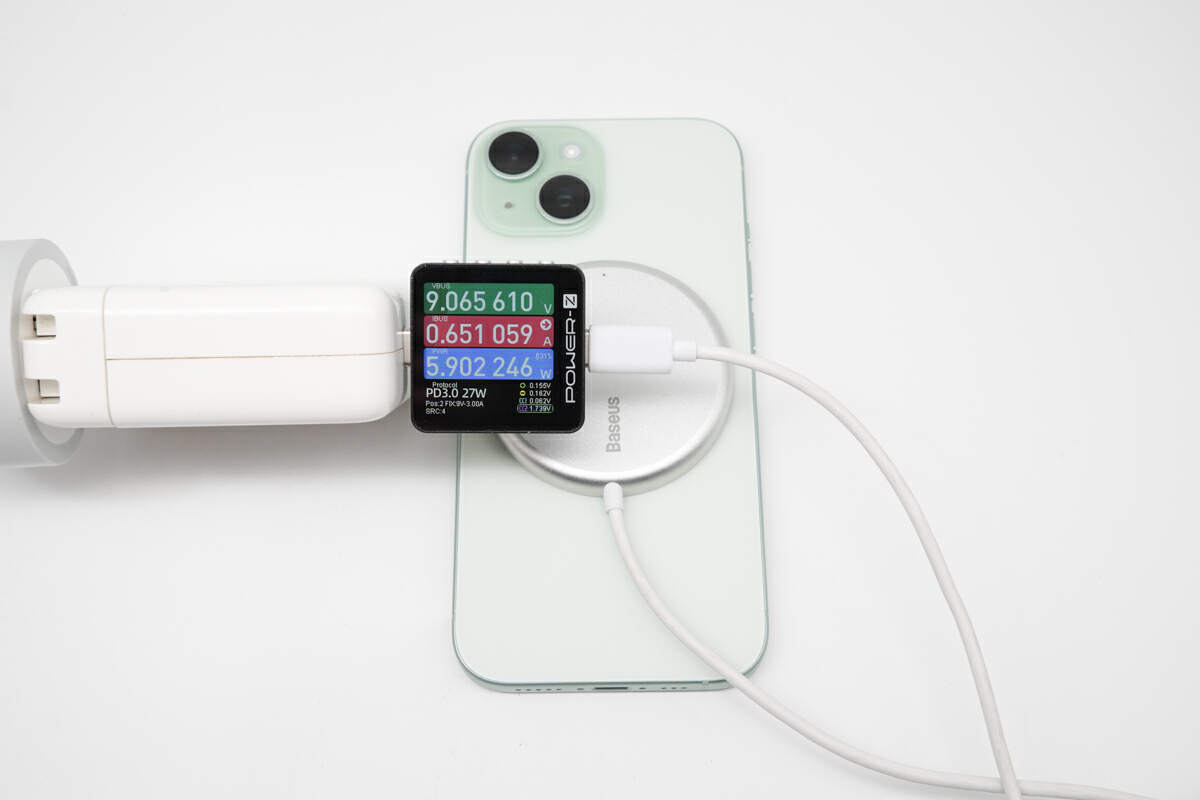
However, when using chargers that only support the Qi standard, the charging power is limited to 7.5W. When Qi2 wireless chargers hit the market, we'll be able to enjoy the same 15W fast charging experience as MagSafe at a lower price. Stay tuned for that!
Reverse Charging Test
The iPhone 15 series has introduced reverse charging feature, allowing it to charge several devices. We previously tested the 15 Pro. Now, let's see if the base model retains this capability.
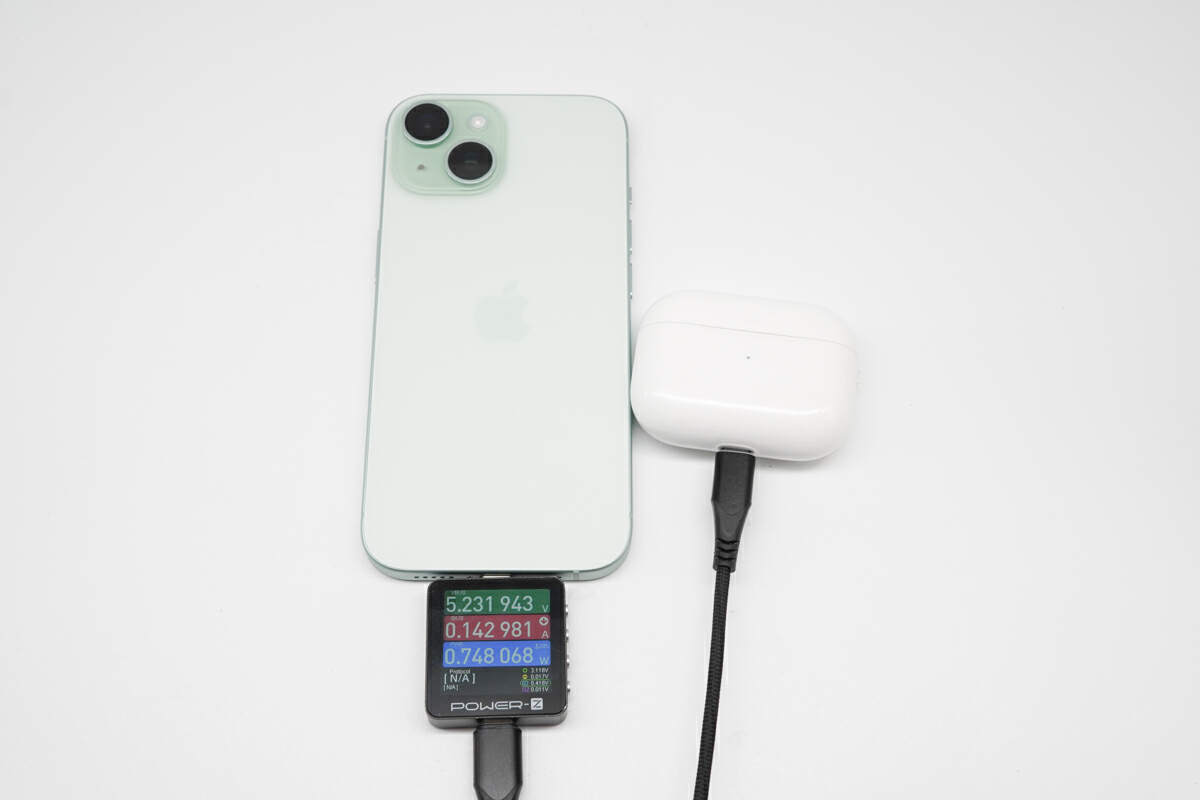
Since this feature is most suitable for outdoor situations without power sources or in emergencies, we used a random third-party cable for the test. As shown, it can charge AirPods Pro with a power output of 0.7W.
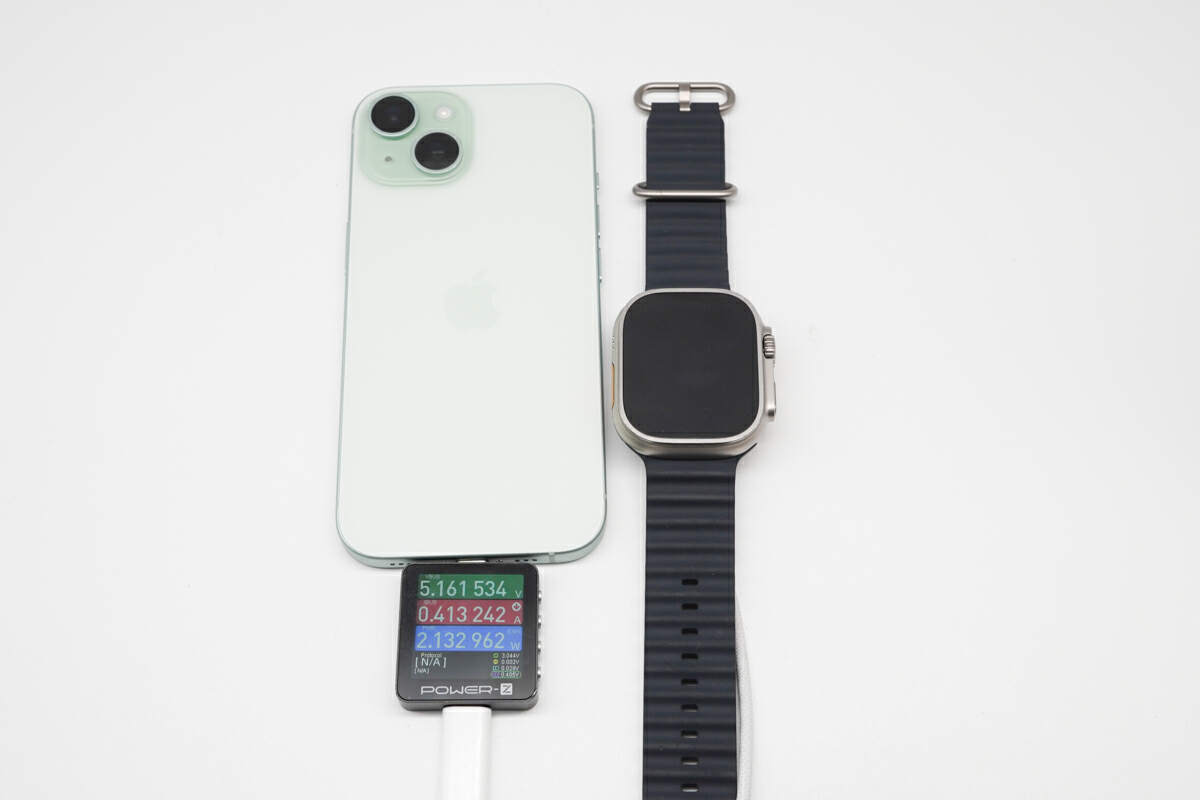
Using the Apple Watch's own cable, it can provide Apple Watch Ultra with power at 2W.
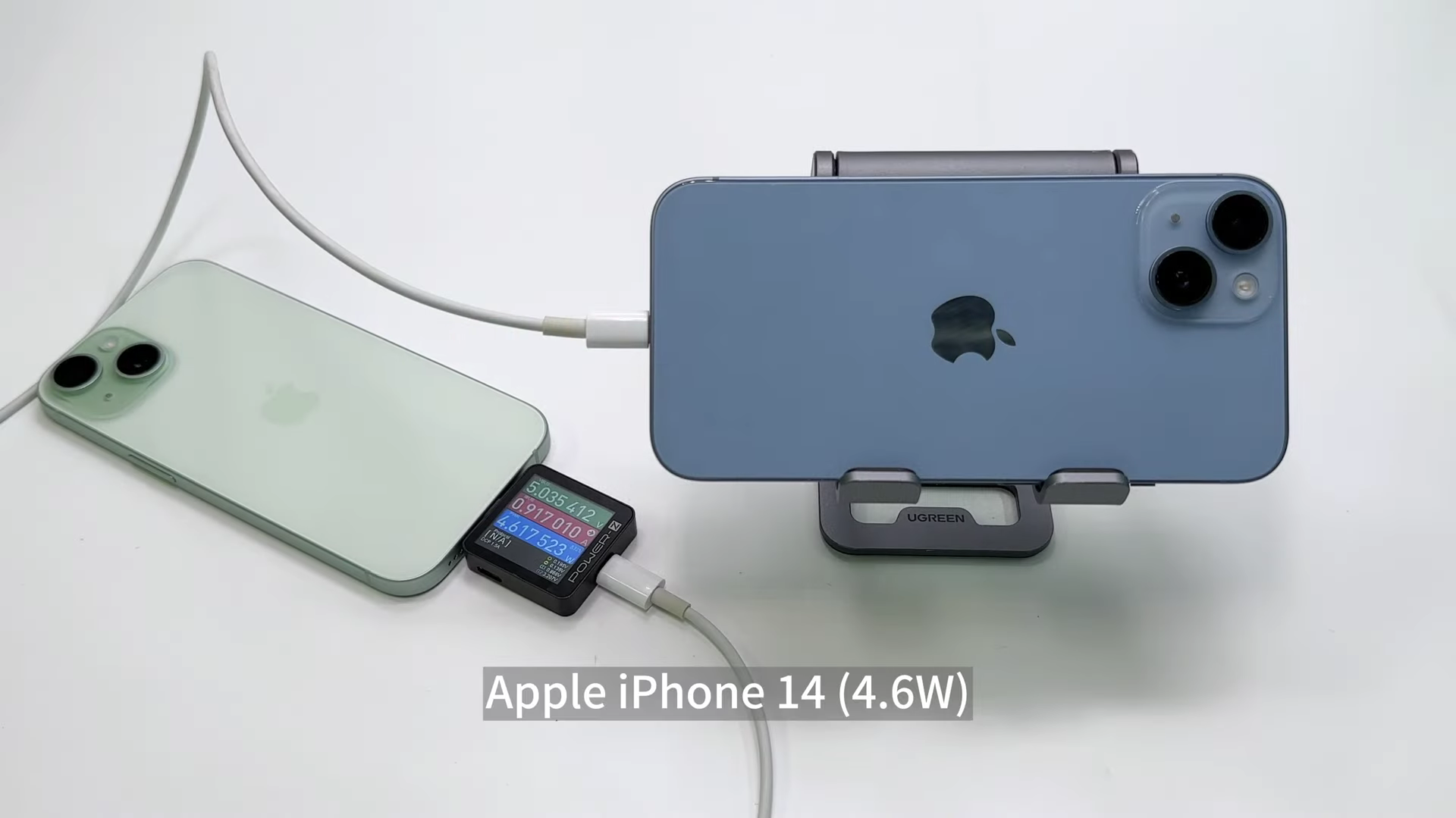
Furthermore, it can even provide power of nearly 5W to your friends' iPhones or Android phones, which is pretty impressive. In fact, we've made a dedicated video for this exciting new feature, and you can watch it by clicking here.
80% Limit Charging Optimization
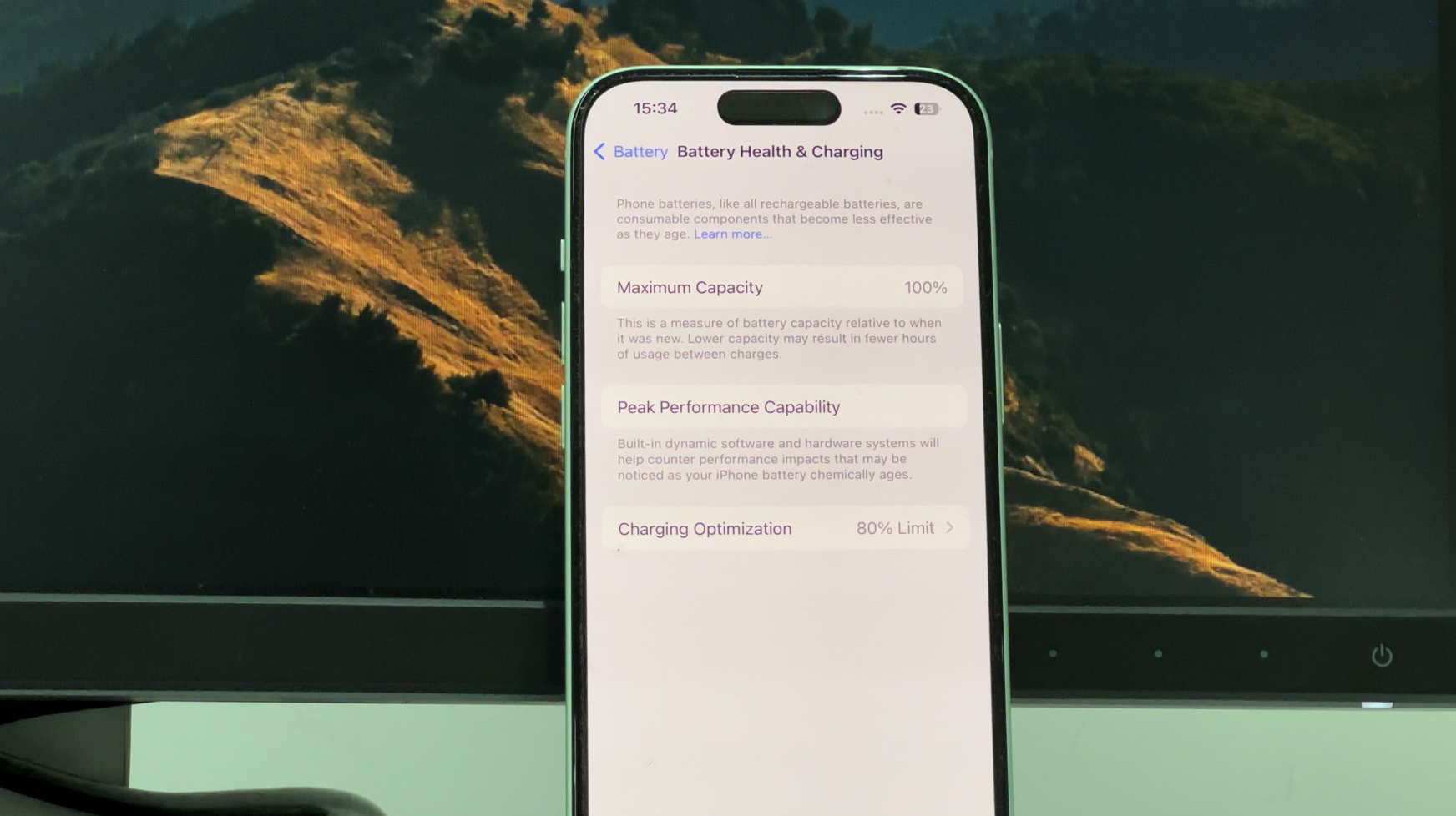
And the iPhone 15 has introduced an 80% limit charging option, similar to the 15 Pro.
Full Charging Test
Next, we'll use the Apple 35W dual USB-C traditional power adapter to fully charge the iPhone 15.
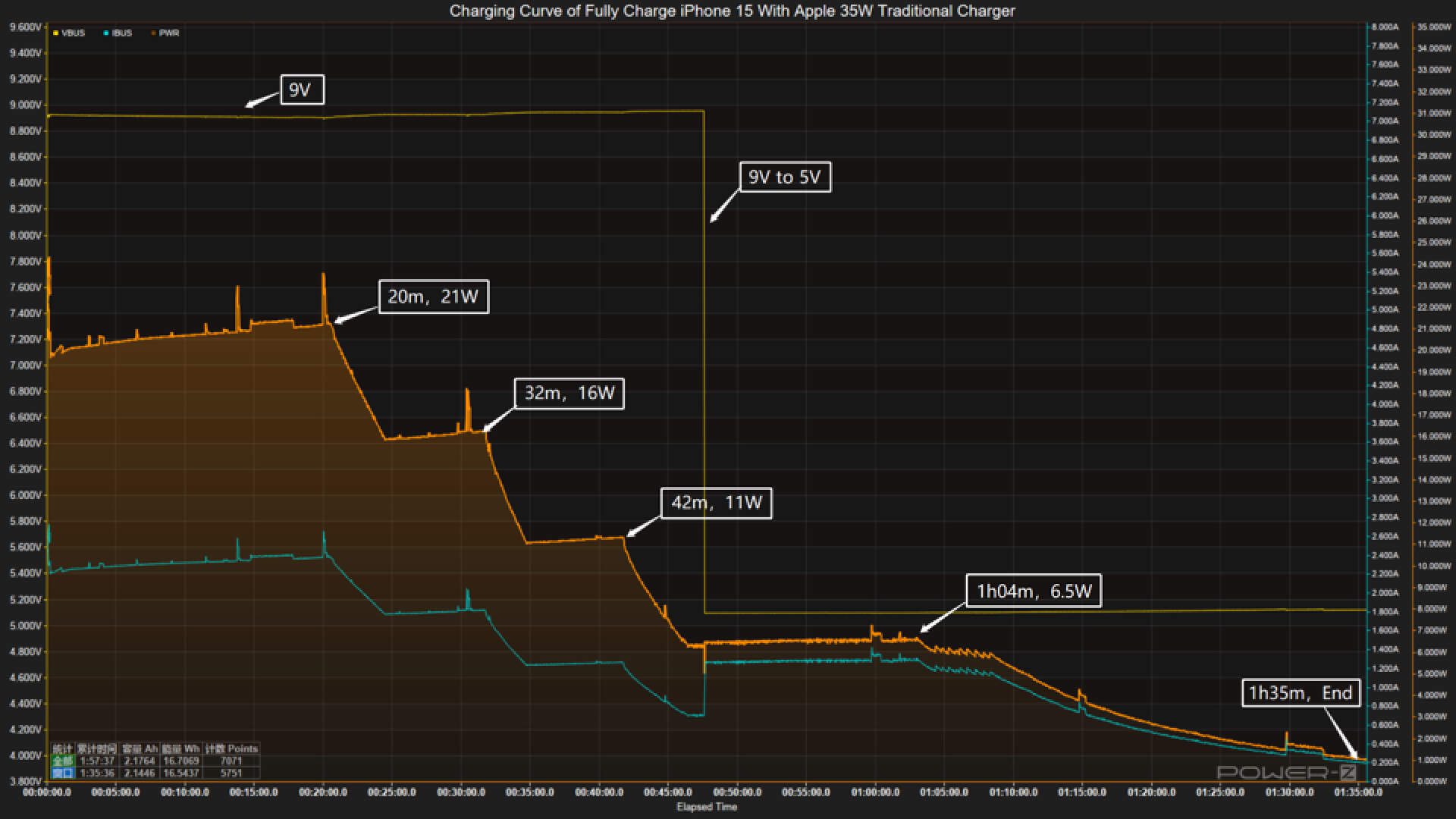
The voltage is around 9V at first, and the charging curve can be divided into five parts. In the first part, the peak power stayed around 21W for the first 20 mins. Then, the power gradually drops to 16W, 11W, and 6.5W in turn. Meanwhile, the voltage dropped to 5V at 47 mins. The final part begins at one hour and 4 mins, the power slowly drops to almost zero. It takes one hour and 35 mins to be fully charged.
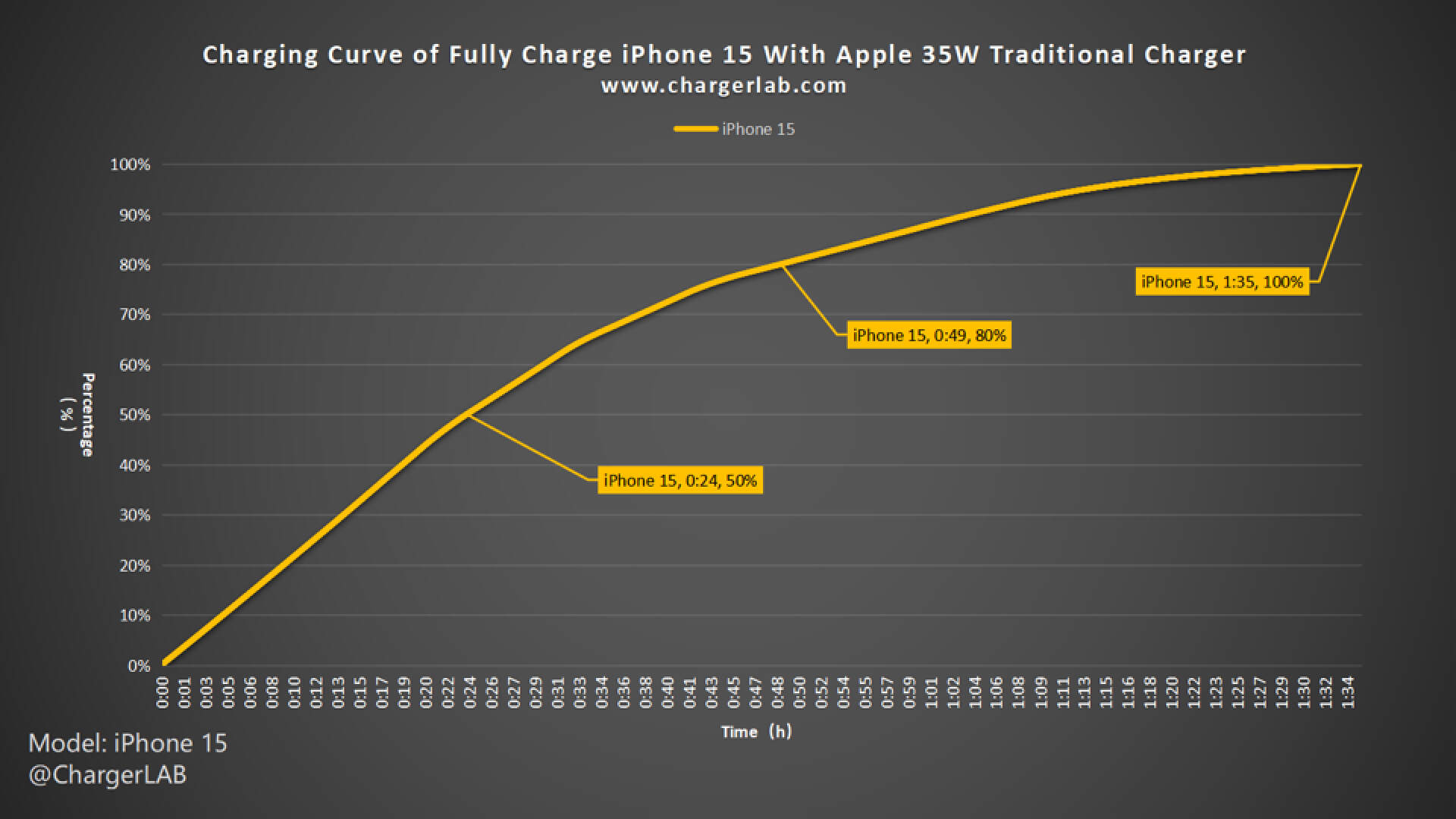
We also turn it into another curve. The 35W charger can charge the iPhone 15 to 50% in 24 mins. And it can reach 80% in 49 mins, 100% in one hour and 35 mins. This is similar to the iPhone 14.
Temperature Test
We also put the iPhone 15 into a 25°C (77℉) thermotank throughout the test, and recorded the highest temperatures on the front and back at three different time points.
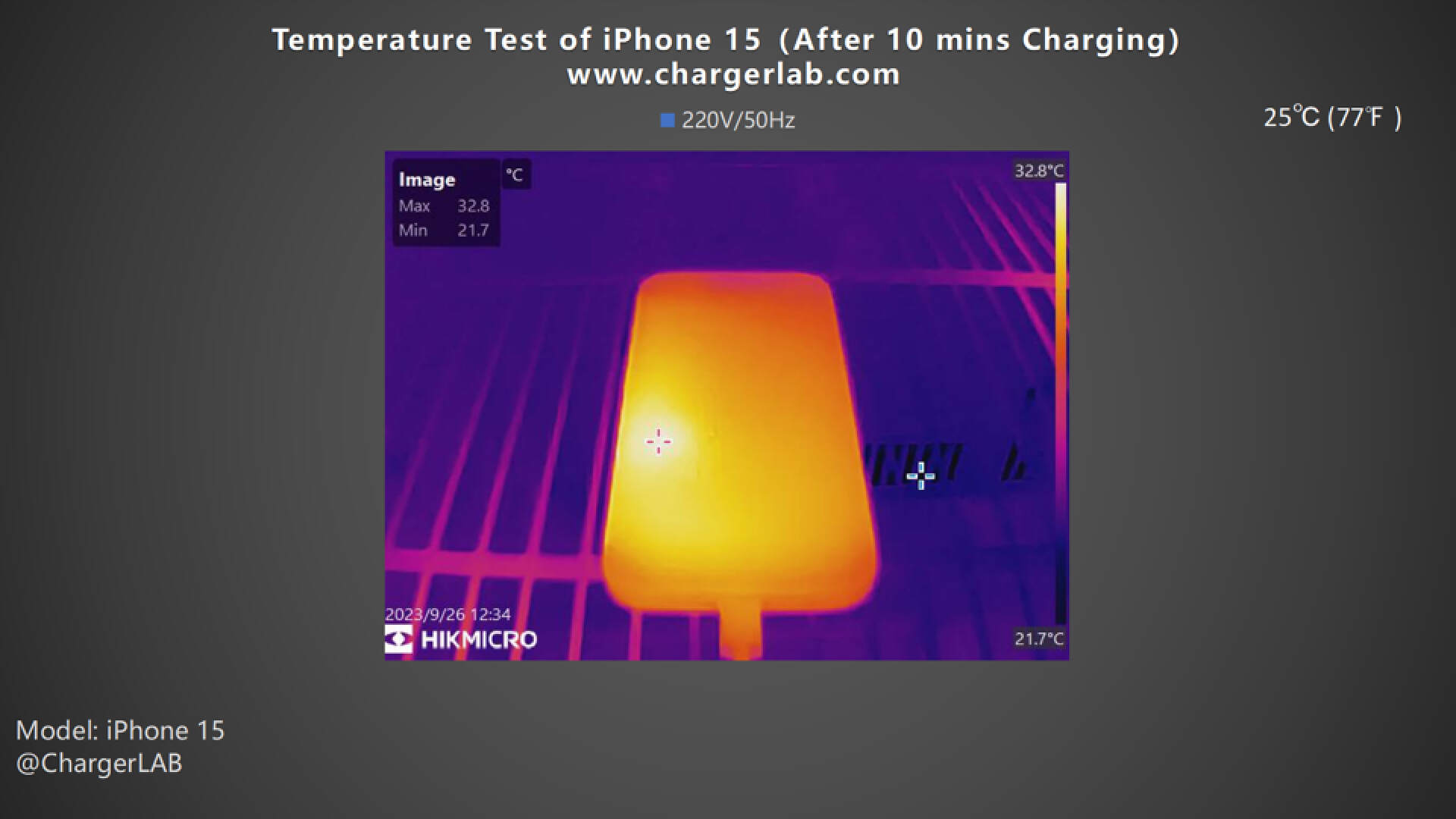
After 10 minutes of charging, the thermal imaging camera shows the highest temperature on the front is 32.8℃ (91.04°F).
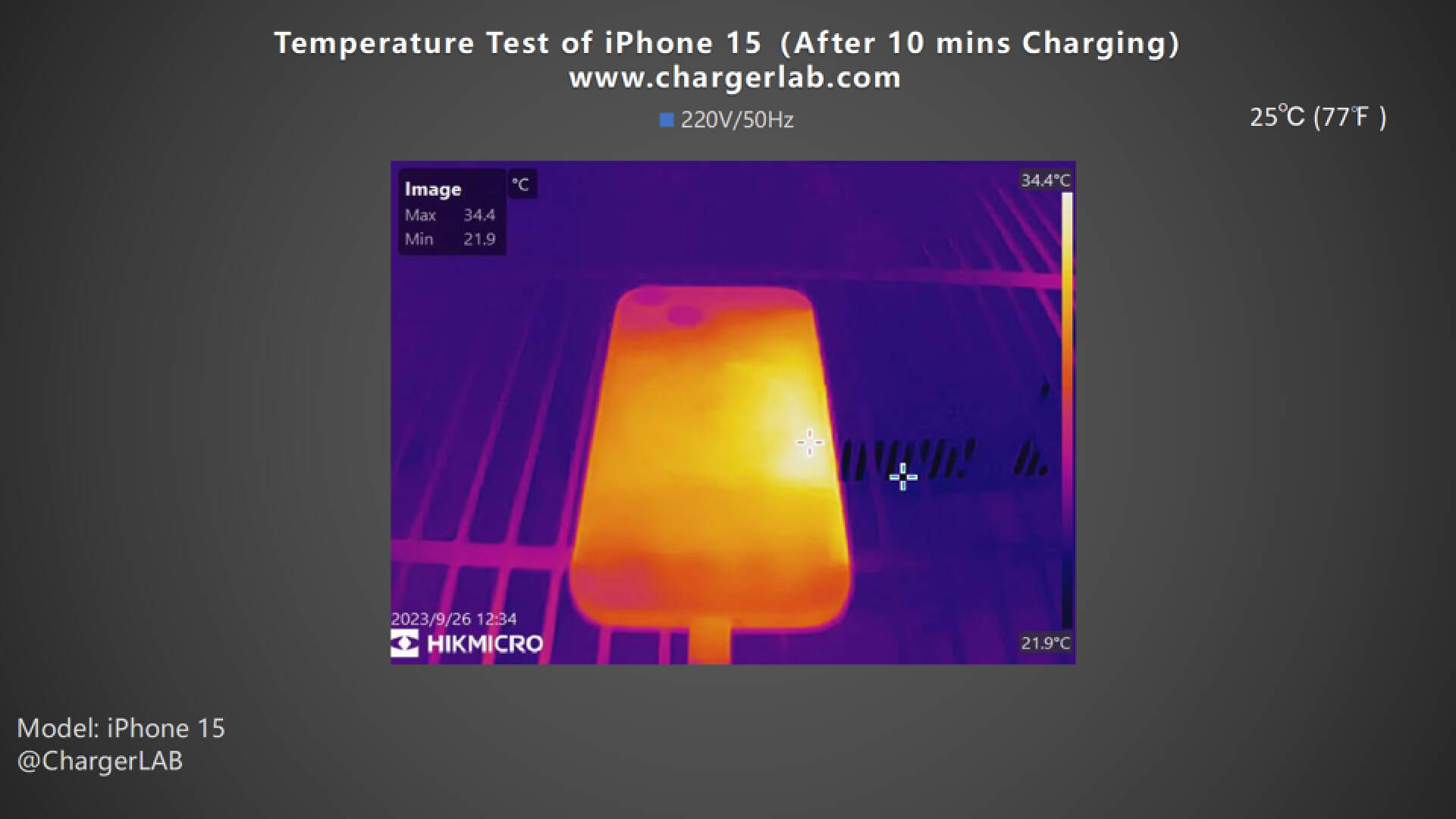
The back temperature is higher at 34.4°C (93.92°F).
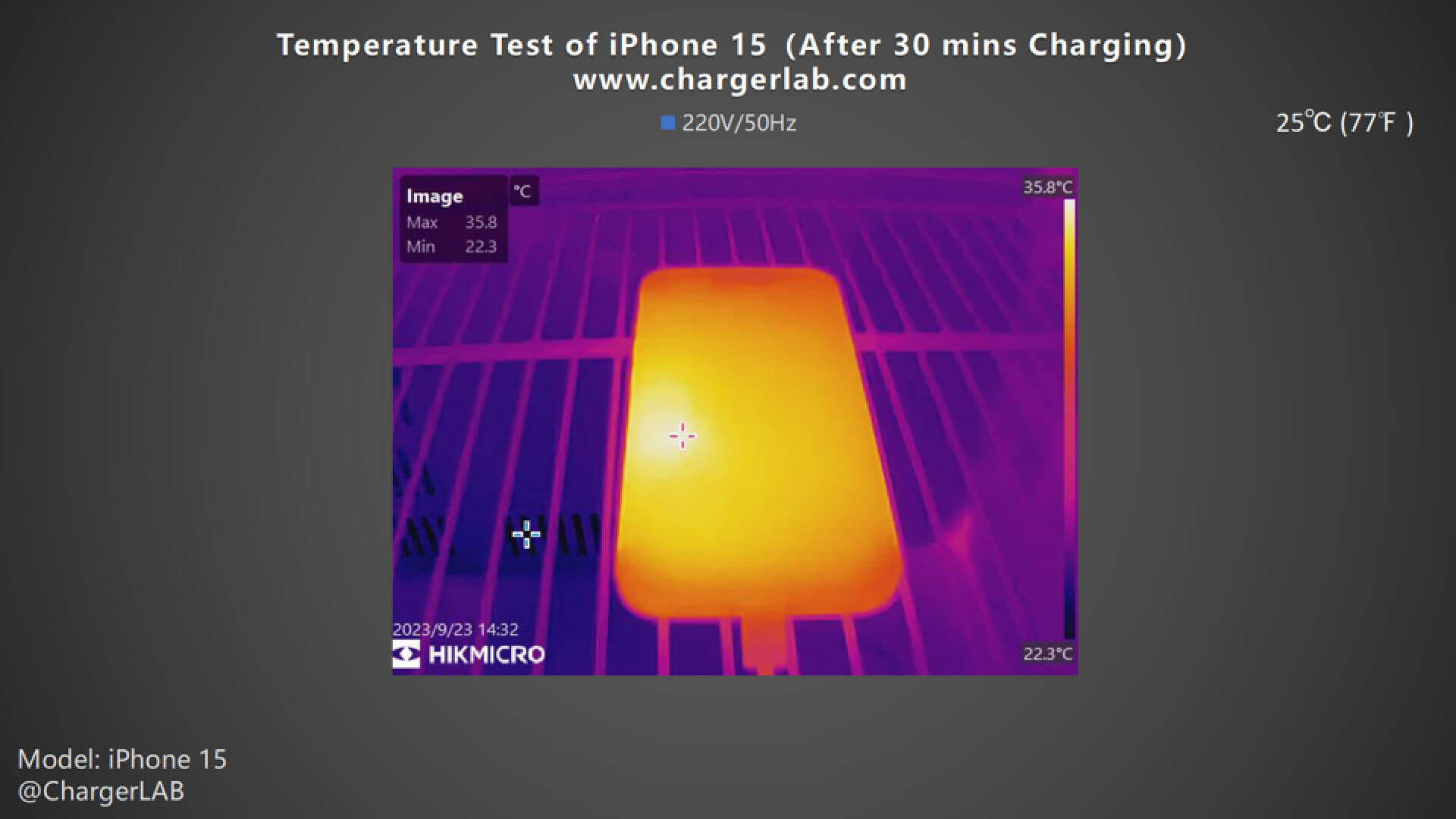
After 30 minutes, the highest temperature on the front increased to 35.8°C (96.44°F).
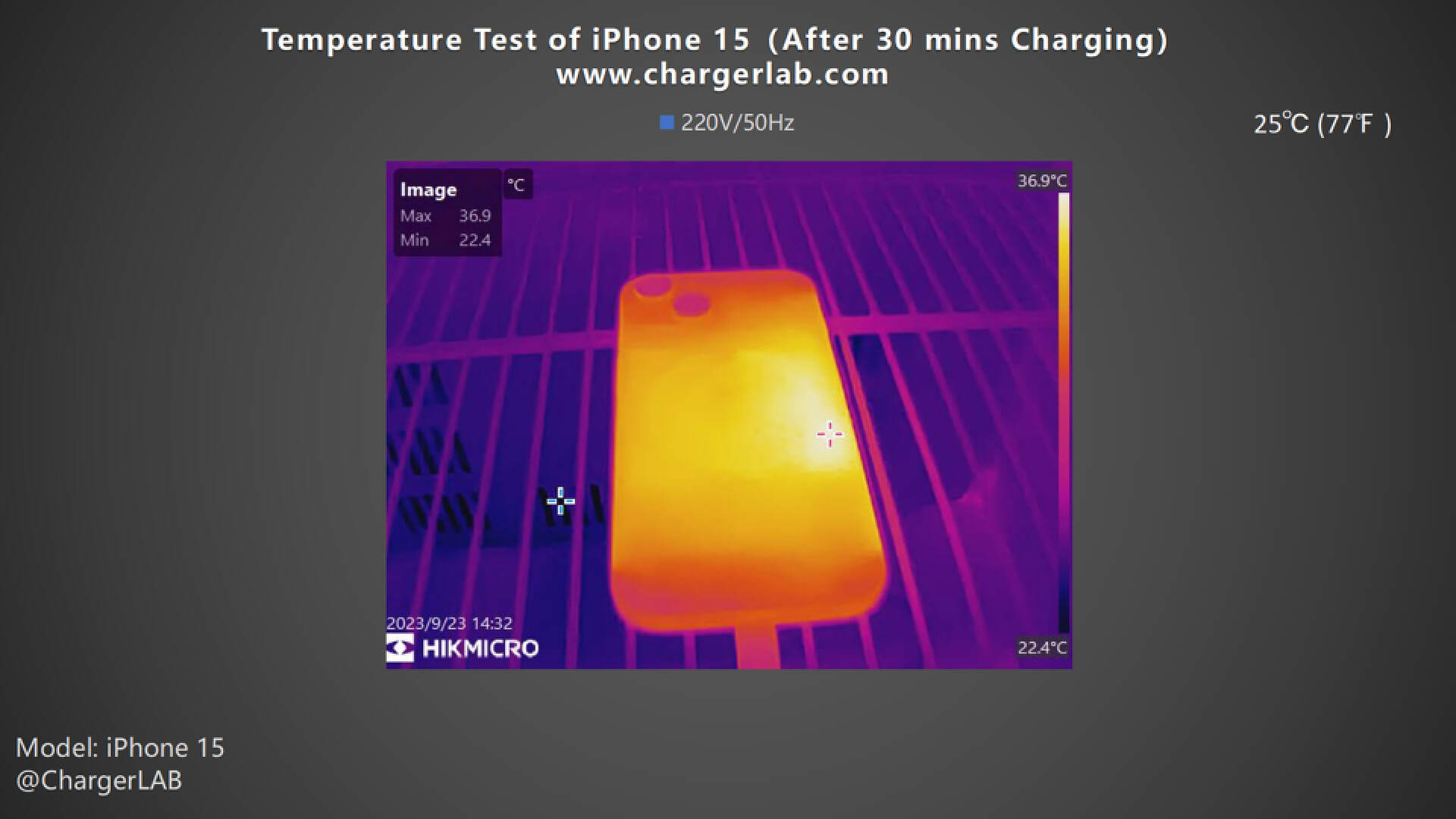
The back is 36.9°C (98.42°F).
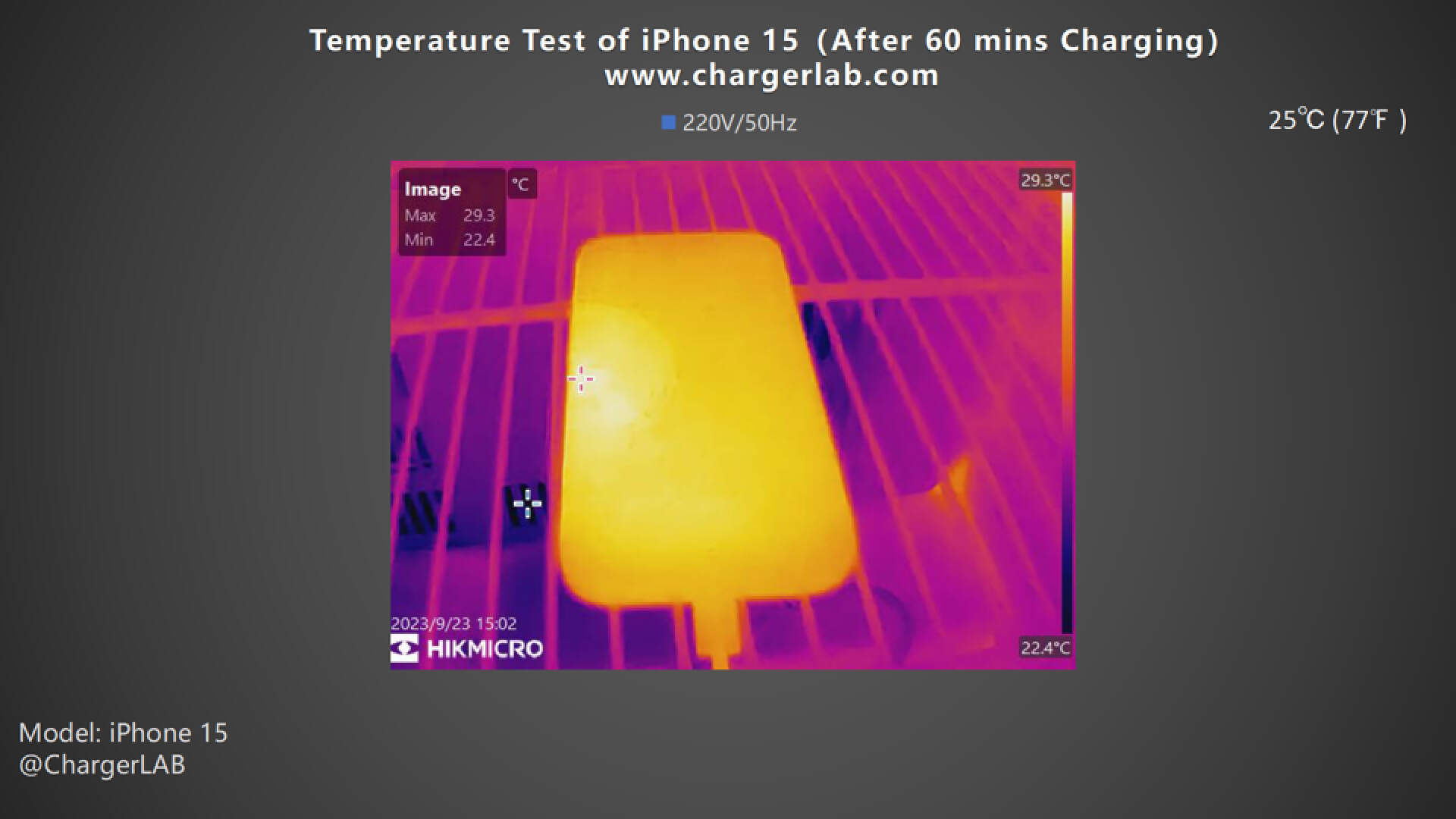
Just like the iPhone 15 Pro and 15 Pro Max, after 60 minutes, the highest temperature on the front dropped to 29.3°C (84.74°F).
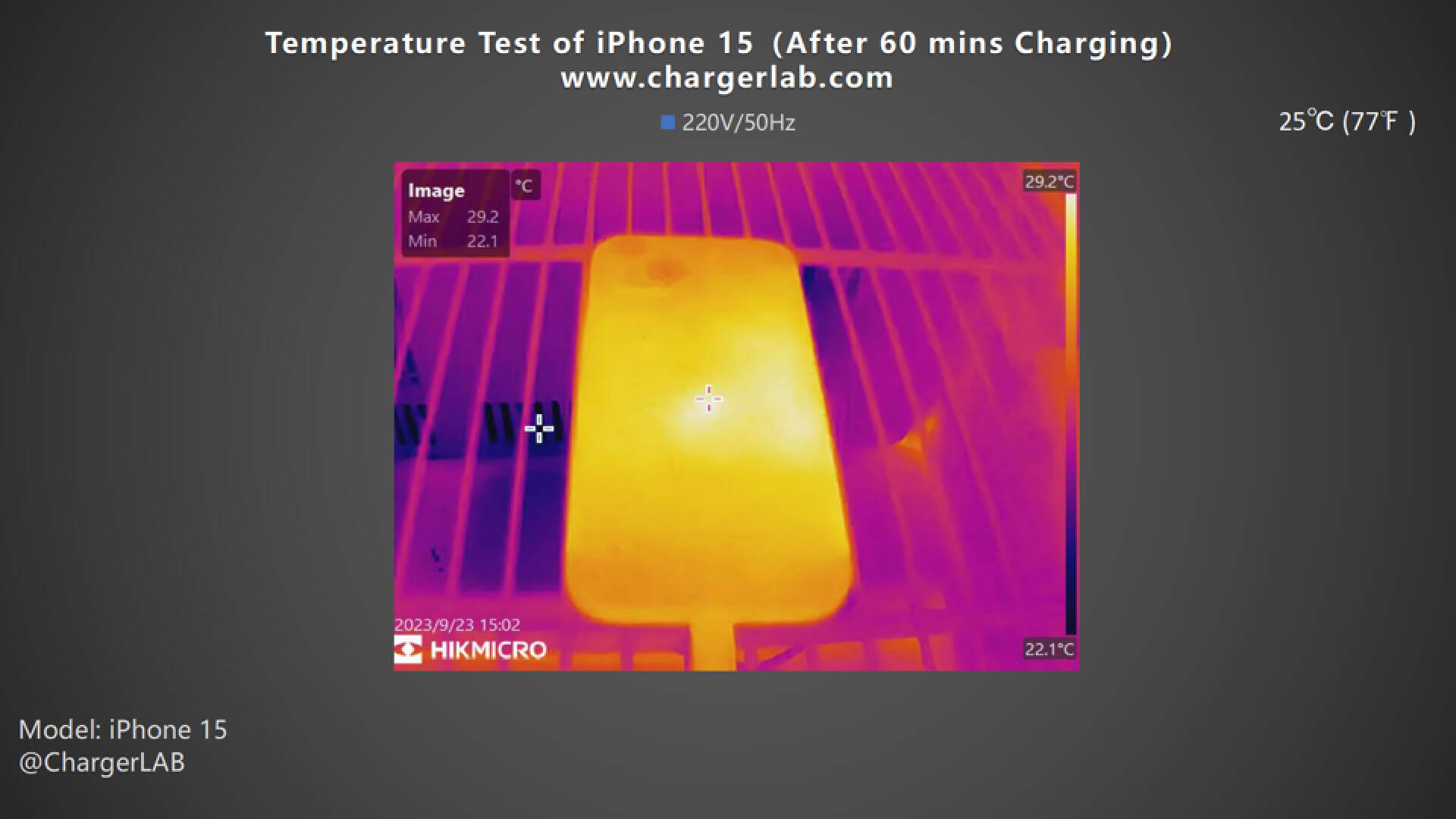
The back is 29.2°C (84.56°F).
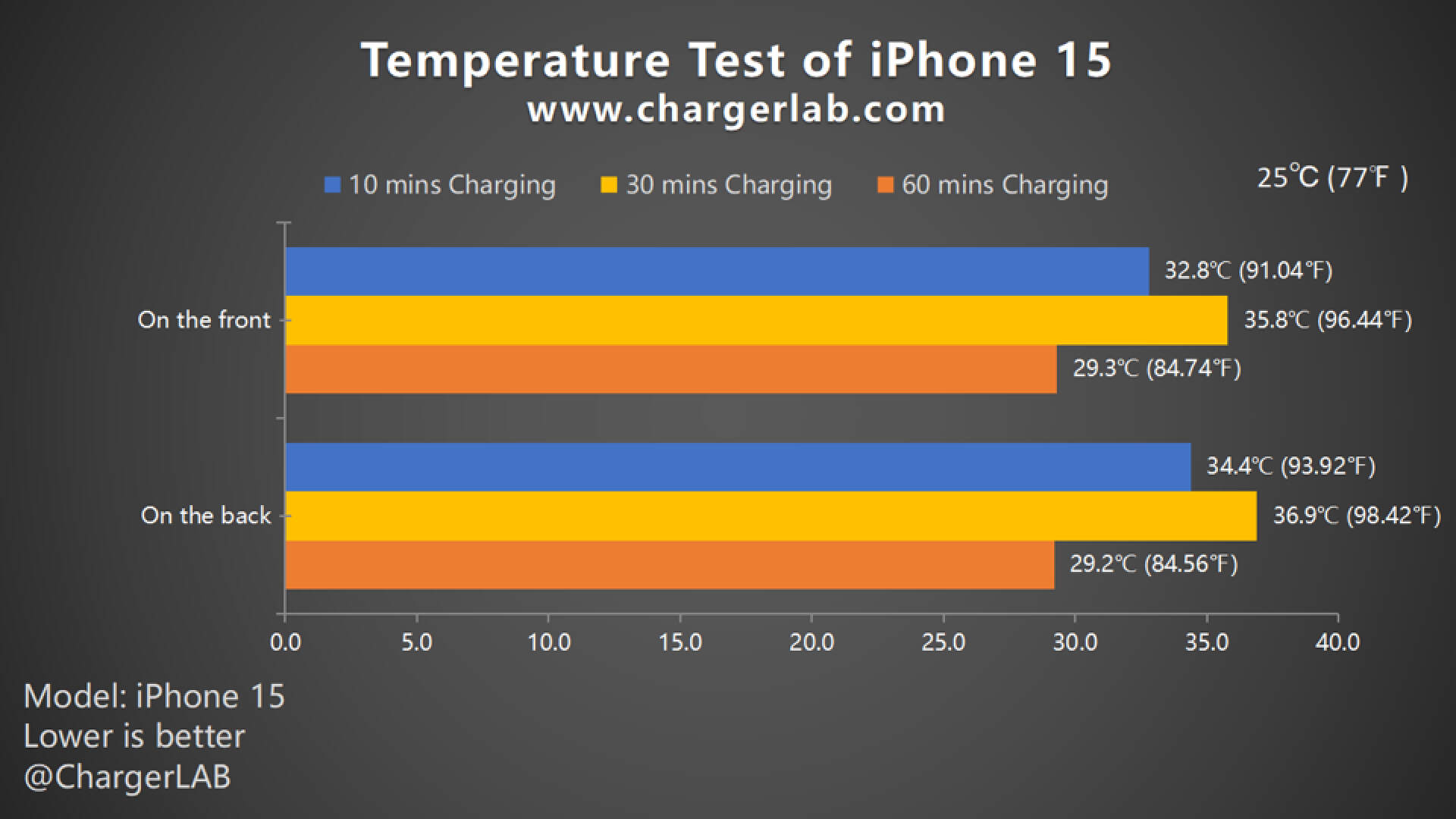
From this bar graph, the highest temperature is about 36.9°C (98.42°F) on the back at 30 mins. According to the full charging test, the phone was in fast charging mode at that time. After charging for 60 minutes and switching to trickle charging mode, as the voltage and power decrease, so does the temperature.
Summary of ChargerLAB
Testing the charging performance of the iPhone series has often been somewhat boring; Especially considering that the iPhone 15's maximum charging power is lower than that of the 14. However, the full charging time for both of these models is similar, at around one hour and 35 minutes.
Nevertheless, it has some advantages, including good charging compatibility and lower heat generation during charging. Additionally, the use of the USB-C port offers better compatibility and the potential to enhance charging power for future models.
Related Articles:
1. Apple iPhone 15 Charging Test - ChargerLAB Compatibility 100
2. How Fast Apple iPhone 15 Pro Max Is Charged? - ChargerLAB Compatibility 100
3. How Fast Apple iPhone 15 Is Charged? - ChargerLAB Compatibility 100

